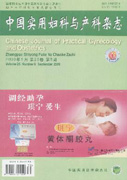|
|
Management of early-onset preeclampsia in hospitals at different levels.
HE Jing,HONG Yan-yu
2021, 37(5):
539-542.
DOI: 10.19538/j.fk2021050109
Early-onset preeclampsia has the feature of special gestational week at onset, and some cases progress very quickly and have severe complications, so multidisciplinary support is needed, including maternal support at critical condition, obstetrical clinic support and rescue of preterm neonates in severe cases. Therefore, the medical institutions of all levels must know whether they have the ability to deal with such cases before accepting the patients for treatment. The hospitals without the related support should contact and refer the patients to higher-level hospitals as soon as possible after initial management when the patients’condition is relatively stable, and give professional management during the referral. Nevertheless, for the preeclampsia cases which are not suitable for referral, the collaboration among different levels of hospitals and high-quality consultation are also involved.
|

